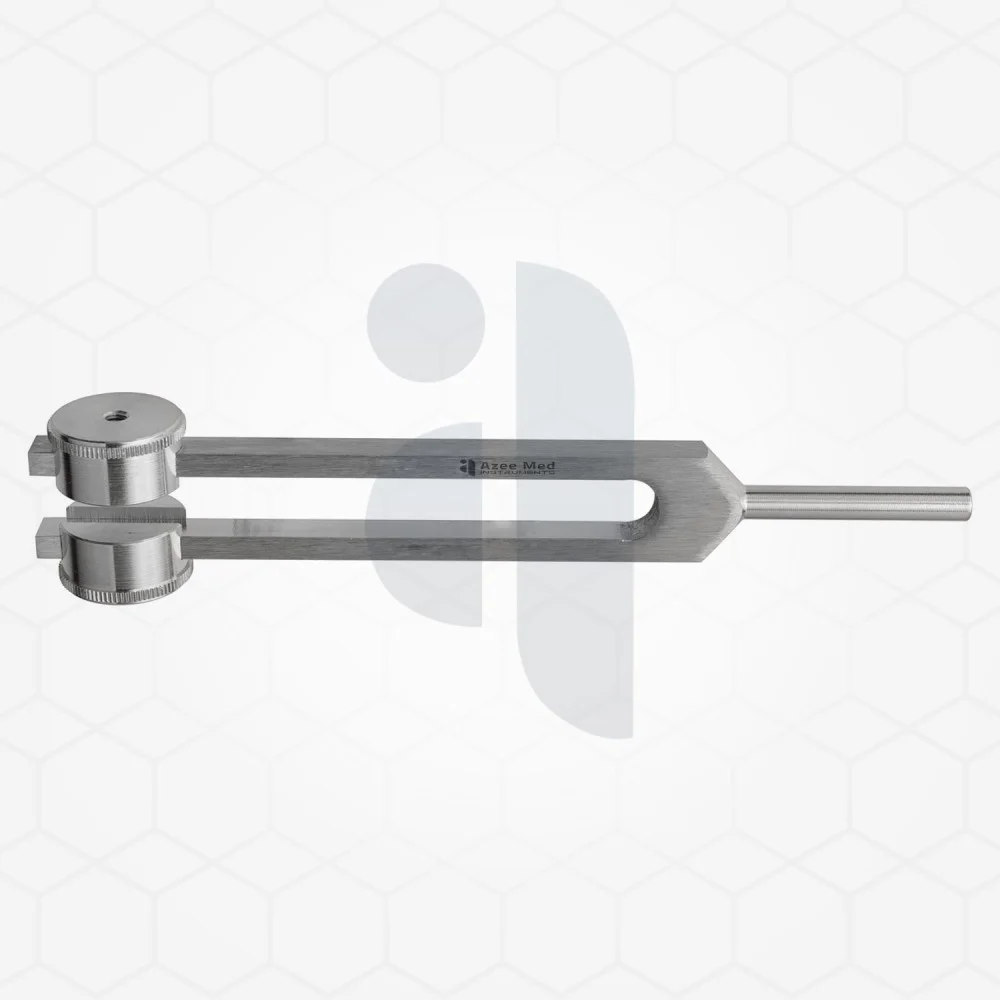The field of neurology relies on a range of sophisticated instruments to diagnose and monitor conditions affecting the nervous system. Among these, the humble tuning fork holds a special place. Its use in tuning fork neurology is a fundamental skill, allowing clinicians to assess vibratory sense and hearing with remarkable precision. This simple yet effective tool provides critical information that can point toward various neurological disorders, making it an indispensable part of a comprehensive physical examination.
At Azeemed Instruments®, we understand the importance of reliable and accurate diagnostic tools. Our commitment to quality ensures that every instrument, from the most complex surgical device to the essential tuning fork, meets the high standards expected by medical professionals. We believe that precision in diagnosis starts with precision in instrumentation.

The Role of Tuning Forks in Neurological Exams
A neurological examination is a systematic process designed to evaluate the intricate workings of the nervous system. The use of a tuning fork neurology approach is vital for testing specific sensory pathways. When a vibrating tuning fork is placed on a patient's bone, such as the ankle or wrist, it tests their ability to perceive vibration. A diminished or absent sense of vibration can be an early sign of peripheral neuropathy, a condition often associated with diabetes, vitamin deficiencies, or other systemic diseases. This simple test provides invaluable data quickly and non-invasively. Similarly, instruments are crucial for delicate procedures, including those requiring sub tenon's administration, where precision is paramount.
The Rinne and Weber tests are two classic hearing assessments performed with a tuning fork. These tests help differentiate between conductive and sensorineural hearing loss. By evaluating how sound travels through bone and air, a neurologist can gather clues about the location of a potential lesion within the auditory pathway. The accuracy of these tests depends heavily on the quality of the tuning fork used. A tool that produces a consistent frequency is essential for reliable results, which is why professionals trust Azeemed Instruments® for their diagnostic needs.
Understanding Different Frequencies and Their Uses
Tuning forks come in various frequencies, each serving a specific purpose in a clinical setting. The 128 Hz tuning fork is the standard for assessing vibratory sensation, or pallesthesia. Its lower frequency produces a strong vibration that is easily perceptible, making it ideal for detecting subtle sensory deficits. For auditory testing, a 512 Hz tuning fork is typically preferred because its tone falls within the range of human speech and is less likely to be felt as a vibration.
Choosing the correct instrument is critical for an accurate diagnosis in tuning fork neurology. A high-quality tuning fork, engineered for consistent performance, ensures that the test results are both repeatable and reliable. Azeemed Instruments® provides a range of tuning forks crafted from premium materials to deliver the precise frequencies needed for thorough neurological and auditory assessments. This dedication to quality empowers clinicians to make confident diagnostic decisions based on trustworthy data.
Quality and Precision in Neurological Instruments
The effectiveness of any diagnostic procedure is directly linked to the quality of the tools used. In tuning fork neurology, this is particularly true. A poorly manufactured tuning fork may not hold its frequency, leading to inconsistent and misleading results. This could delay a correct diagnosis or lead to unnecessary further testing. Medical professionals require instruments that they can depend on, day in and day out.
Azeemed Instruments® is dedicated to providing high-quality surgical and diagnostic tools that meet the rigorous demands of the medical field. Our tuning forks are manufactured to exact specifications, ensuring they produce a pure tone and sustained vibration. This commitment to excellence extends across our entire product line, giving healthcare providers the confidence they need to deliver the best possible patient care. When a diagnosis relies on the subtle findings of a physical exam, the quality of the instrument is not just a preference; it is a necessity.
Conclusion: The Enduring Value of the Tuning Fork
In an era of advanced imaging and complex electronic testing, the tuning fork remains a cornerstone of the neurological exam. Its simplicity, portability, and diagnostic power make it an irreplaceable tool. The practice of tuning fork neurology offers a direct, hands-on method for assessing sensory and auditory pathways, providing immediate feedback that guides clinical judgment.
By choosing high-quality instruments from a trusted supplier like Azeemed Instruments®, clinicians can ensure they are performing these fundamental tests with the utmost accuracy and reliability. Our unwavering dedication to providing professionals with superior tools helps uphold the standard of care and supports better patient outcomes. The tuning fork is a testament to the idea that sometimes the most effective solutions are the ones that have stood the test of time.




Comments